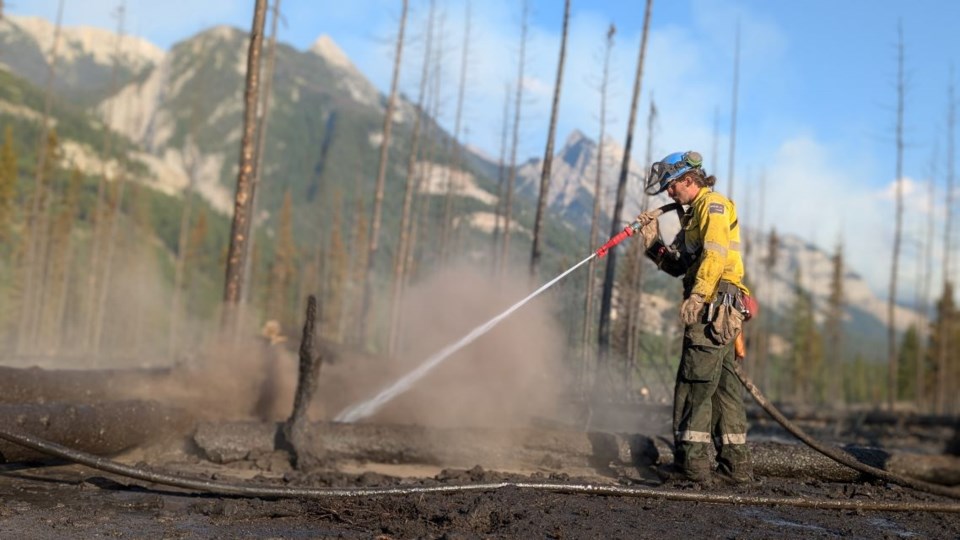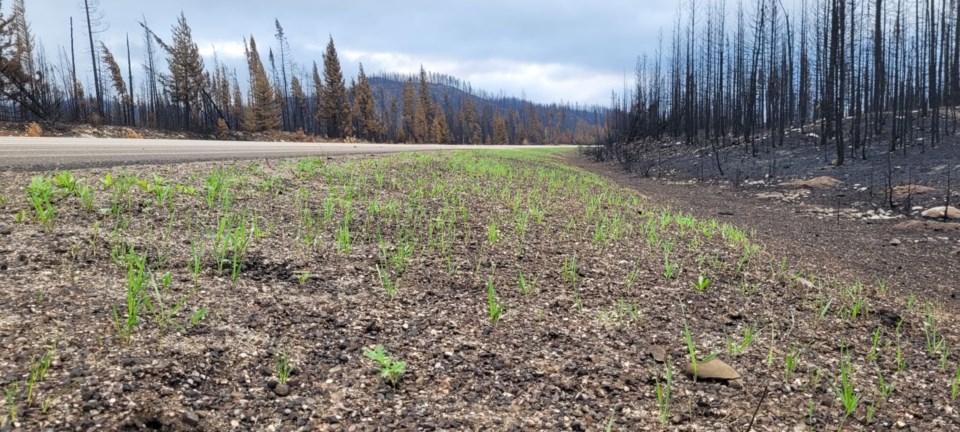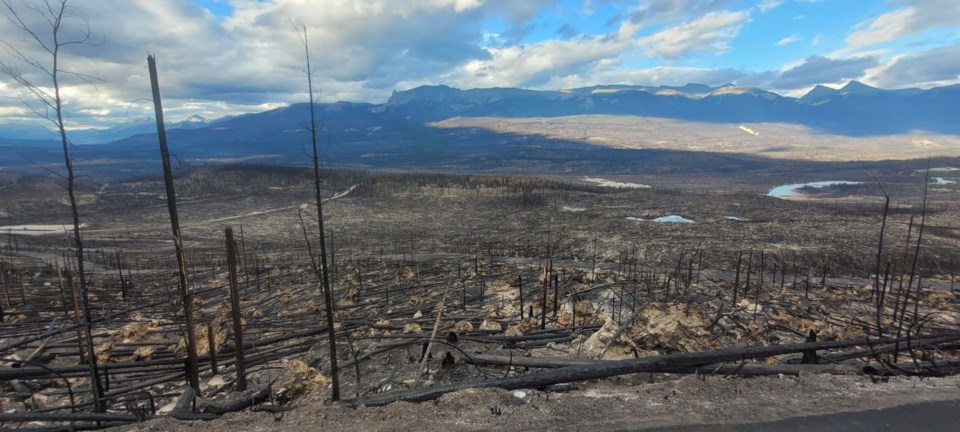As the wildfire situation stabilizes in Jasper, many continue to wonder how the fire spread so quickly and how it could have been prevented.
Mike Flannigan, a wildfire expert and British Columbia Innovation Research Chair at Thompson Rivers University in Kamloops, B.C., said a major wildfire in this part of the world was all but inevitable.
“Many of our communities, including Jasper, are in a flammable landscape, so it was a matter of time,” Flannigan said. “Fires love to run up and down valleys, [and] Jasper’s kind of at the confluence of three valleys.”
Flannigan noted Jasper had experienced three weeks of hot and dry weather prior to the lightning strikes that started multiple fires on July 22.
Although he was unsure what actions Parks Canada took to initially suppress the fires, he explained the typical approach should be an aggressive initial attack.
“As soon as those fires were detected, they should have been extinguished,” he said. “Even under extreme conditions – and they were extreme – if you get this fire when it’s small, you can put it out.”
If the fire has grown too big, the next option is planned ignitions to destroy fuel before the wildfire arrives.
Protecting the town
Flannigan noted sprinklers would ideally be set up in a town to protect structures from embers that may rain down from a nearby wildfire.
While many houses may be FireSmart, a few might not be. Embers could set these houses on fire, and blaze could spread from structure to structure, even to houses where the owner had been FireSmart.
“I believe Jasper is a FireSmart community, which is good, but you’re only as strong as your weakest link,” Flannigan said. “I think, in high-risk locations, it has to be mandatory, or it won't be successful.”
The wildfires were intense enough to create a pyrocumulus cloud, a fire-generated thunderstorm that helped spread the embers, which can travel two kilometres or more.
Although it is theoretically possible to create a buffer around town against embers by removing conifers and doing prescribed burns, Flannigan doubted this would be practical.
“You cannot treat three kilometres,” he said. “First, it gets really expensive. Second, people don't want it. If you removed all the conifer trees three kilometres from Jasper, I'm sure a lot of people would raise their voice and say, ‘We want our forest.’”

Flannigan said evacuating Jasper the evening of July 22 was the right call, especially since many recreationalists were in the backcountry.
“I'm sure most people Monday thought that the fires wouldn't reach town or take many more days than it did, but these fire-generated thunderstorms are explosive in intensity and how fast they can move, so to me, it’s not surprising that it was Wednesday [July 24],” he added.
“My hope was that the cold front would come early enough that the winds would shift, and the rains would come early enough to save the town, but obviously, the cold front was about five hours too late.”
Flannigan dismissed the idea that the mountain pine beetle infestation played any significant role in the wildfires, and he thought that wildfire suppression over the past century in Jasper National Park was only a minor factor.
“As we get warmer, our fire seasons are getting longer, we’re seeing more lightning, and probably the most critical aspect is as temperatures warm, the ability to suck deep moisture out of the fuel, that vegetation … increases almost exponentially with warming,” he said.
Future risk of wildfires
Overall, the wildfire risk has lowered for Jasper in the long-term. The affected areas are unlikely to reburn for 15 to 20 years, or if they do reburn, the fires will be of much lower intensities and easier to extinguish.
Flannigan, however, agreed with many residents’ concerns that the valley west of the townsite was primed to burn.
While fires typically like to burn up a valley due to the winds, they can come running down a valley when conditions are extreme.
“If I was in charge of the park or the town, that’s the area where I would concentrate my efforts on because from other directions, you’re safe for the next 20 years at least because it’s going to take a while for that forest to come back,” Flannigan said.

Banff National Park is also at high risk of a major wildfire, as is any community in Canada surrounded by conifers.
“It’s just a matter of time before there’s a fire [in Banff],” Flannigan said. “Whether it’s the town or not, that’s hard to say. If it’s conditions similar to what you had in Jasper, like the hot, dry weather and then explosive fire weather conditions, yeah, the town could burn down.”
Flannigan estimated it could take up to 100 years for Jasper’s forests to get back to where they were, but some vegetation and even a few trees would come back soon.
As well, the fire has cleared out many trees damaged by mountain pine beetle and essentially given these areas a clean restart.
Lessons to learn
Flannigan noted at-risk areas should have the proper resources on standby, particularly during extreme conditions, to ensure an initial aggressive attack against any new wildfires that may appear.
He also advocated for making FireSmart mandatory in high-risk communities.
“I saw the video of some of these structures burning, with cedar shakes and things like that,” he said. “Yes, it looks historic and rustic, but it's not FireSmart. It’s not a good look.”
Officials should consider mounted sprinklers for structures and investing in communication systems to alert the public, such as sirens typically used in tsunami warning systems.
Flannigan said there will likely be an independent after-action review of the Jasper wildfire sometime in the future.
“You will get a group of experts, and you take a look at what happened to see what we can learn from it,” he said. “They did this in Slave Lake. They did this in Fort McMurray. These are pretty standard things to do.”




